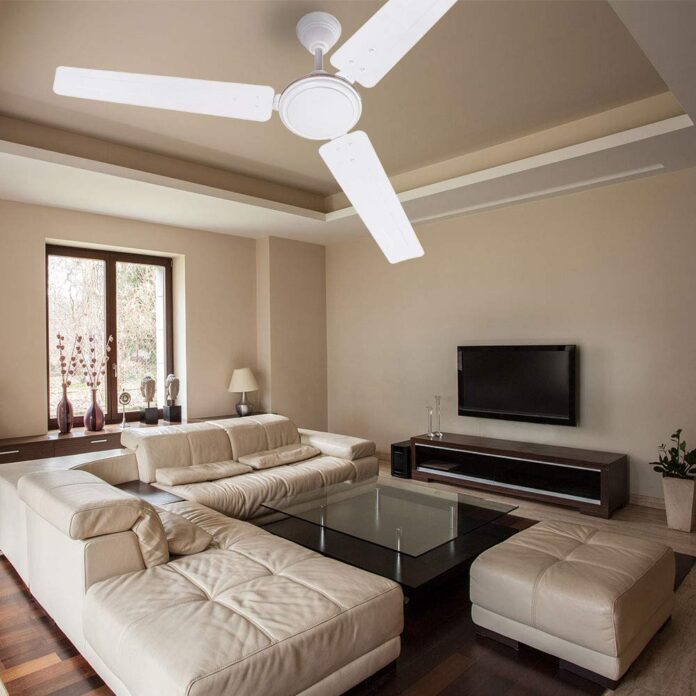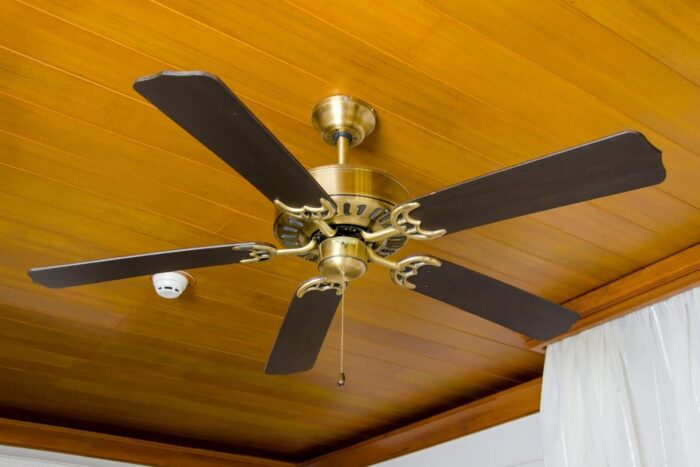
Ceiling fans are a great way to keep your home comfortable and stylish, but they also have a feature that you might not be aware of: the reverse switch. Todaysfans, a leading manufacturer of high-quality ceiling fans, offers this convenient switch that allows you to change the direction of the fan blades from counterclockwise to clockwise and vice versa. But why would you want to do that? What is the purpose of the reverse switch in ceiling fans? Let’s explore its benefits and how it can enhance your comfort and energy efficiency.
The answer is simple: the reverse switch helps you optimize the airflow and temperature distribution in your home according to the season. Depending on the direction of rotation, the angled blades of the ceiling fan can push air downwards or upwards. This can have different effects on your comfort and energy efficiency.
In this article, todaysfans’s experts will explain how the reverse switch works and when you should use it to get the most out of your ceiling fan.
How the Reverse Switch Works

The reverse switch is usually located on the side or bottom of the fan motor housing. It is a small button or lever that you can slide or flip to change the direction of the fan blades. When you turn on the fan, you will notice that the blades spin either counterclockwise or clockwise.
The direction of rotation determines the direction of airflow. When the blades spin counterclockwise, they create a downward airflow that cools you down by creating a wind chill effect. This is also known as summer mode. When the blades spin clockwise, they create an upward airflow that redistributes warm air from near the ceiling to lower parts of the room. This is also known as winter mode.
When to Use Summer Mode
You should use summer mode when you want to cool down your home during hot days. The downward airflow from the fan creates a breeze that makes you feel cooler by evaporating sweat from your skin. This can lower your perceived temperature by up to 8 degrees Fahrenheit1.
Summer mode also helps you save energy by reducing your reliance on air conditioning. You can set your thermostat higher and still feel comfortable with a ceiling fan running. According to Energy Star, you can save up to 10% on cooling costs by using a ceiling fan and raising your thermostat by 4 degrees2.
To use summer mode, make sure that the reverse switch is set to counterclockwise and that the fan speed is high. You should also turn off the fan when you leave the room, as it only cools people and not spaces.
When to Use Winter Mode

You should use winter mode when you want to warm up your home during cold days. The upward airflow from the fan pulls cold air from near the floor and pushes warm air from near the ceiling down to where you are. This helps to even out the temperature in your room and reduce cold spots3.
Winter mode also helps you save energy by enhancing your heating system. You can set your thermostat lower and still feel warm with a ceiling fan running. According to Energy Star, you can save up to 15% on heating costs by using a ceiling fan and lowering your thermostat by 2 degrees2.
To use winter mode, make sure that the reverse switch is set to clockwise and that the fan speed is low. You should also run the fan continuously, as it takes time for warm air to circulate.
The Benefits of Using the Reverse Switch
The reverse switch in ceiling fans is not just a fancy addition; it has practical benefits that contribute to energy efficiency and comfort. By utilizing the reverse switch, users can change the direction of the blades to accommodate different seasonal needs.
During summer, the counter-clockwise rotation creates a wind-chill effect that cools the room. In winter, a clockwise rotation helps to redistribute warm air that has risen to the ceiling, reducing the need for heating systems.
This can lead to significant energy savings over time, and it also ensures a more consistent temperature throughout the room. The ability to adapt to seasonal changes with a simple switch enhances the usability of ceiling fans, making them a versatile addition to any household.
Troubleshooting Common Problems with the Reverse Switch

Like any mechanical part, the reverse switch on ceiling fans can face issues that may impede its functionality. Understanding common problems and how to address them can save time and frustration. Sometimes, the reverse switch might become jammed or stuck, preventing the change in direction.
This could be due to dust buildup or mechanical failure within the switch. Regular cleaning and gentle manipulation can often resolve this issue. In some cases, the motor might not respond to the switch at all, indicating an electrical problem.
This may require professional inspection and repair. Knowing how to identify and troubleshoot these common problems ensures that the fan continues to operate effectively, maintaining the benefits of the reverse switch in both summer and winter modes.
Final Thoughts
Ceiling fans have a reverse switch that allows you to change the direction of their spinning from counterclockwise to clockwise and vice versa. Depending on the direction of rotation, the angled blades of the ceiling fan can push air downwards or upwards. This helps to cool down or warm up your home according to the season. By leveraging this functionality, homeowners can create an ideal living environment year-round.
By using summer mode (counterclockwise) or winter mode (clockwise), you can optimize your comfort and energy efficiency with a ceiling fan. You just need to remember to adjust the reverse switch, fan speed, and thermostat accordingly. These simple adjustments can contribute to both sustainability and a pleasant atmosphere in your living space.
So next time you look at your ceiling fan, don’t forget about its hidden feature: the reverse switch. It can make a big difference in your home! This often-overlooked feature adds to the multifunctional value of a ceiling fan, turning it from a basic cooling device into a year-round climate control tool.
















